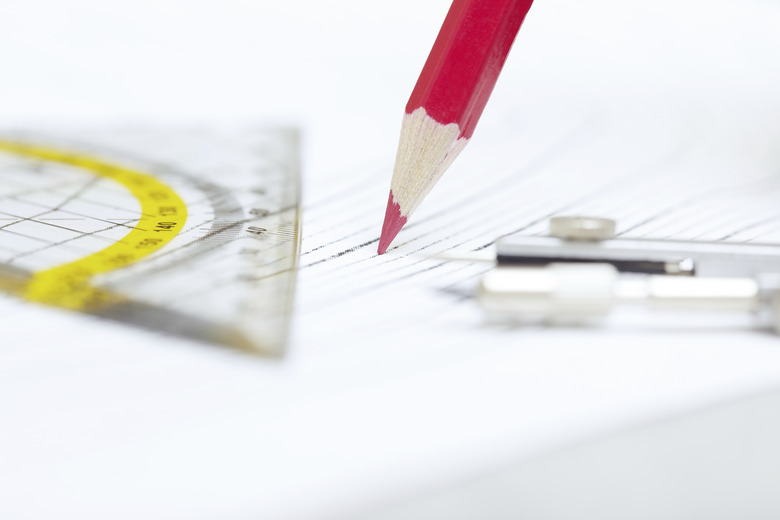How To Calculate Quadrilateral Area
The area of a quadrilateral describes the surface of a two-dimensional shape. Area can be visualized as the number of tiles it takes to cover a floor or the amount of paint that a wall needs. To find the area of a quadrilateral, take careful measurements of the length, width and height of the shape and use the appropriate formula for the specific type of quadrilateral.
Area of Square and Rectangle
Area of Square and Rectangle
To calculate the area of a square or rectangle, you need to know the measurements of the sides. The sides of a square are equal, so the formula is s squared = area. S represents the length of one side. If the side is 4 inches, then the area is 4 x 4, which equals 16 inches squared.
To find the area of a rectangle, multiply the length of the horizontal side by the length of the vertical side. Use the formula width x height = area. If the width is 4 inches and the height is 2 inches, the area equals 8 inches squared.
Area of Rhombus and Parallelogram
Area of Rhombus and Parallelogram
Although a rhombus has all equal sides, while a parallelogram has two pairs of equal sides, the formula for area is the same. The formula is **base x height = area.** The base represents the length of the bottom side.
Unlike the formula for a square or rectangle, the height does not represent the length of a vertical side. Draw a perpendicular line from the base of the shape to the top line. The measurement of this vertical line is the height of the shape.
If the measurement of the base is 4 inches and the height is 3 inches, then the area of the shape is 12 inches squared.
Area of a Trapezoid
Area of a Trapezoid
A trapezoid is a quadrilateral with two unequal parallel sides. The formula is the same if the non-parallel sides are regular or irregular. The formula is **½(a + b) x h.** The letter a represents the length of the top side, b represents the length of the bottom side and h represents the vertical height.
The height of the shape is not the length of a side, but is the length of a vertical line that is perpendicular to the top and bottom sides.
To solve the formula where the length of a equals 3 inches, the length of b is 5 inches and the height is 4 inches, follow the order of operations and first add 3 + 5. Then, take that sum, 8, and multiply it by ½ to get 4.
Now multiply 4 by the height, 4, and the area is 16 inches squared.
Area of Irregular Figures
Area of Irregular Figures
Some quadrilaterals don't fit the definition of a square, rectangle, rhombus, parallelogram or trapezoid. The sides are of uneven or irregular length. One way to find the area of these shapes is to draw lines within the shape to create shapes for which the area can be easily solved.
For instance, many quadrilaterals are made up of rectangles and triangles.
Solve the area of the triangle, **½ x b x h, and solve the area of the rectangle, w x h.** Add the two areas together to calculate the area of the entire shape.
Cite This Article
MLA
Burgtorf, Tabitha. "How To Calculate Quadrilateral Area" sciencing.com, https://www.sciencing.com/calculate-quadrilateral-area-5139902/. 24 April 2017.
APA
Burgtorf, Tabitha. (2017, April 24). How To Calculate Quadrilateral Area. sciencing.com. Retrieved from https://www.sciencing.com/calculate-quadrilateral-area-5139902/
Chicago
Burgtorf, Tabitha. How To Calculate Quadrilateral Area last modified March 24, 2022. https://www.sciencing.com/calculate-quadrilateral-area-5139902/
